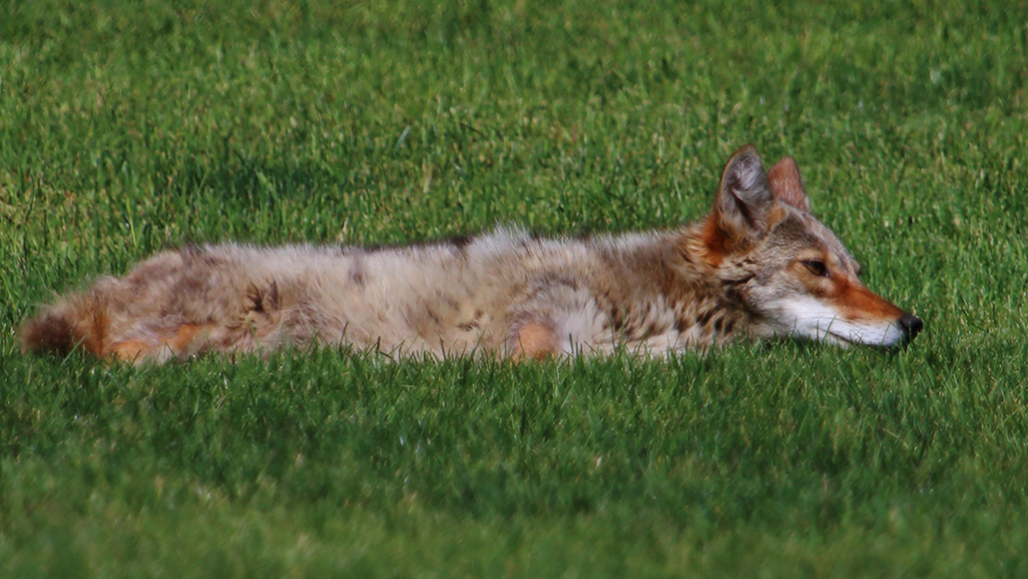Questions for ‘Are coyotes moving into your neighborhood?’

Coyotes thrive in cities. Seen in Denver, Colo., this one is lounging on a lawn in City Park.
tami1120/iStock/Getty Images Plus
Come explore with us!

Coyotes thrive in cities. Seen in Denver, Colo., this one is lounging on a lawn in City Park.
tami1120/iStock/Getty Images Plus
To accompany feature “Are coyotes moving into your neighborhood?”
1. Many wild animals live near people in cities and suburban areas. Do you think coyotes and other predators should be allowed to live near people? Why or why not?
2. What challenges might wild animals face when living in populated areas? What urban features might make their lives easier?
1. Where did coyotes live before 1700? What allowed them to spread into a larger area?
2. Where is the one place in the United States that coyotes don’t live? Why do you think there aren’t any there?
3. What is the goal of the L.A. Urban Coyote Project?
4. What did Raphael Kaplan and Justin Brown’s other volunteers learn about the diets of city and suburban coyotes?
5. According to the story, what are two advantages of city life for coyotes? What are two disadvantages?
6. What are two strategies that Stanley Gehrt has seen coyotes use to cross roads?
7. What is one difference between the coyote population living in Los Angeles and the coyote population in New York City?
8. How did Carol Henger and her team figure out how many coyote families are living in New York City?
9. Why is genetic diversity important for a population?
10. What has Javier Monzon discovered from a genetic survey of coyotes in and around Los Angeles?
1. After reading this story, has your opinion about whether coyotes should be allowed to live in cities and suburbs changed? Explain your answer.
2. How could you find out whether coyotes live in your neighborhood? Use evidence from the story to explain your answer.
Register to access:
An error occurred. Please try again.
Already Registered? Enter your e-mail address above.